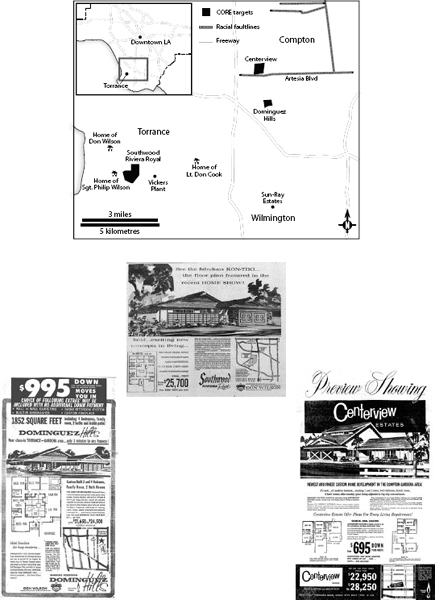Contents

City of Segregation
City of Segregation
One Hundred Years of Struggle For Housing in
Los Angeles
Andrea Gibbons

First published by Verso 2018
Andrea Gibbons 2018
All rights reserved
The moral rights of the authors have been asserted
1 3 5 7 9 10 8 6 4 2
Verso
UK: 6 Meard Street, London W1F 0EG
US: 20 Jay Street, Suite 1010, Brooklyn, NY 11201
versobooks.com
Verso is the imprint of New Left Books
ISBN-13: 978-1-78663-270-8
ISBN-13: 978-1-78663-499-3 (HBK)
ISBN-13: 978-1-78663-271-5 (UK EBK)
ISBN-13: 978-1-78663-272-2 (US EBK)
British Library Cataloguing in Publication Data
A catalogue record for this book is available from the British Library
Library of Congress Cataloging-in-Publication Data
Names: Gibbons, Andrea, author.
Title: City of segregation : 100 years of struggle for housing in Los Angeles / Andrea Gibbons.
Description: Brooklyn : Verso, 2018.
Identifiers: LCCN 2018017690 | ISBN 9781786632708 (paperback) | ISBN 9781786634993 (hardback)
Subjects: LCSH: Discrimination in housingCaliforniaLos Angeles. | African AmericansHousingCaliforniaLos Angeles. | Housing policyCaliforniaLos Angeles. | Los Angeles (Calif.)Social conditions. | Los Angeles (Calif.)Race relations. | BISAC: SOCIAL SCIENCE / Discrimination & Race Relations. | SOCIAL SCIENCE / Sociology / Urban. | SOCIAL SCIENCE / Ethnic Studies / African American Studies.
Classification: LCC HD7288.76.U52 L6734 2018 | DDC 363.509794/94dc23
LC record available at https://lccn.loc.gov/2018017690
Typeset in Minion Pro by Hewer Text UK Ltd, Edinburgh
Printed by Maple Press, US
To my dad, Patrick Gibbons, and to my friend, Mark Anderson.
I wish both of you were here to share this with me.
A high degree of racial residential segregation is universal in American cities. Whether a city is a metropolitan center or a suburb; whether it is in the North or South; whether the Negro population is large or smallin every case, white and Negro households are highly segregated from each other In fact, Negroes are by far the most residentially segregated urban minority group in recent American history.
Karl Taeuber and Alma Taeuber, Negroes In Cities:
Residential Segregation and Neighborhood Change, 1965
Contents
Map 1. The greater LA area

Map 2. LAs African American population, 18902010, mapped against points of contestation and showing shifting racial faultlines

Map 3. Disciplinary actions against African American families outside of the Black Belt, 19021926

Map 4. Known KKK areas and industrial areas in 1920s LA and Orange County

Map 5. African American homeowner associations, homes of prominent white realtors, and early spaces of contestation through 1927

Map 6. White organizing efforts through 1948

Map 7. Incident map (top) showing the worst violence in relation to the 1939 LA HOLC map (bottom)

Map 8. Developer Don Wilsons tracts and advertising campaigns

Map 9. Principal racial incidents in Compton

Map 10. Downtown LA Business Improvement Districts (BIDs) with Skid Row boundaries from 1976 plan
Writing this book finally fully brought home to me the truth that our struggle is not for a day or even a lifetime, but was a gift to us from the generations who came before and will be carried on through the generations after. It is beautiful and humbling and an immense responsibility to be part of something so bigabove all this book owes everything to those who have dedicated themselves in some way to changing the world, and to the people and organizations whose fierce struggle fills its pages. From Charlotta and Joe Bass to the activists of CORE to the people I have come to know at the LA Community Action Network, who have changed my life and ways of thinking, I have no hesitation in how I answer the question of how to change the world. My question is instead what needs doing to support such work. Becky Dennison in particular helped me organize things, and I owe a huge debt of gratitude to Gary Blasi from UCLA for many of the documents cited hereI can only aspire to the breadth and length of their commitment to justice. So many in LA have helped and supported me both in struggle and in this project, and so to name only a few that I have argued and learned and laughed with: Gilda Haas and Gary Phillips, Beverley Keefe and Jose Zamarippa, Monic Uriarte and her family, Leonardo Vilchis, Steve Diaz, Davin Corona, Tafarai Bayne, Gloria Serrano and Reyna Monterrosa, Lidia Castelo, Gerry Villa, Thelmy Perez, Monic Uriarte and her wonderful family, Maria-Elena Rivas, Norberta Gonzalez, Aracely Rodriguez, Maria Ramos, Agustina Ramirez, Jackie Cornejo, Evelin Montes, Bobby Bustillo, Cecilia Brennan, Revel Sims and Carolina Sarmiento, Sister Diane, Nancy Ibrahim, the gorgeous Osorio Lambs, and many others.
Im afraid I love lists, and a very large number of people. That my words did not run away with me altogether is due to my wonderful editor Rosie Warren, and to all of the people at Verso. Publishers are a key thread within the radical movement to change the world and I am more grateful than I can say that Verso has taken this on. For the most thoughtful and helpful of all readers reports, Jordan Camp.
This book started out as a PhD at the London School of Economics, and I owe a huge debt of thanks to my supervisors Sharad Chari and Gareth Jones whose support and constant questions and stacks of required reading improved my work tremendously. So many others helped me get through the hard years in London: Helen Shaw and Sean Geoghegan, Ruth Cashman, Ali Crabtree, Rosanne Rabinowitz, China Miville, and Celine Kuklowsky. Who got me through LSE and academia? Murray Low, Jenny Mbaye, Antonis Vradis, Jayaraj Sundaresen, Taneesha Mohan, Tucker Jordan, Meredith Whitten, Ulises Moreno, Bob Caterall, Michael Edwards, Barbara Lipietz, Jane Wills, and Anna Richter.





















